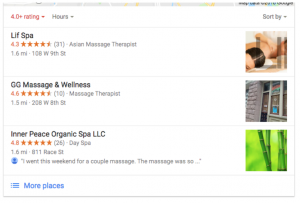Click-and-collect will be the death of retail. At least that’s the prevailing view aired in a recent article on the BBC news website.
The increasing popularity of click-and-collect, the piece argues, will create huge pressures on retailers that they will struggle to cope with. The pressures it’s talking about are the costs of, and resources required by, picking and shipping online orders to the retailers’ own stores.
It’s an odd article. It conflates food and non-food shopping and doesn’t seem to acknowledge the role of click-and-collect in relieving the bottleneck of home delivery. But for all that, it makes some interesting observations. Chiefly that click-and-collect is very popular with shoppers, is not a cost-free option for retailers, and is in a state of ongoing refinement. Which, and let’s be brutally honest here, we all already knew.
Setting aside all glibness, though, there are some fundamentals worth keeping very much at the forefront of your thoughts where this topic is concerned.
For example, there’s a finite number of roads; whether we’re talking about the UK, Europe or globally. And on that finite number of roads you can only fit a certain amount of traffic – particularly here in the UK where it never seems to take much for a traffic jam to break out.
Similarly, there’s a finite number of warehouse space and a limited number of people to work in it. In the aftermath of last year’s Black Friday/Cyber Monday mega-weekend, Yodel ended up with 600,000 more parcels than anticipated. To clear a backlog like that would have meant hiring an additional 5,000 staff – just for a few days. There simply aren’t 5,000 people out there waiting to be hired for a week to put their extensive delivery experience to good use. That spare capacity doesn’t exist. Finite, you see.
By comparison, you, me, all of us, we can shop online whenever and wherever we want; e-commerce is a 24×7 affair, has been for years and that won’t change.
In 2014, 76% of the adult population of the UK accessed the internet. That’s 38 million people. They might not all have been shopping, but that’s a lot of potential for e-commerce.
All of which, every single order, has to make its way along the same network of warehouses, pickers, vans, delivery drivers, and so on.
The numbers of parcels being sent to collection points and outlets, and to in-store click-and-collect counters is a small proportion of the overall 1bn parcels expected to ship in 2015. But it will continue to grow as shoppers favour delivery and collection that marches to the beat of their drum.
John Lewis is now going to charge a fee of £2 for low-value click-and-collect orders. That might not go down overly well with customers who routinely have small orders shipped to their local Waitrose. But it reflects a much-needed change in the way retail delivery presents itself – it’s not just a function of overalls and trucks, it’s a value-add (or at least it can be) and it needs to be seen as such.
There’s no perceived value in things that are free; you might be happy to receive something that’s free, but you won’t necessarily cherish or value it.
Charging for click-and-collect from in-store locations might be seen as a bit of a taboo to some. But as long as it is combined with a degree of flexibility, gives a choice of time and location, and remains priced competitively with home delivery, it makes good commercial sense to show customers the value of the service. And if it encourages them to bundle their shopping and place larger orders, so much the better for the retailer.
The theme of click-and-collect as a potential competitive differentiator is just one of the topics that will be explored in detail at eDelivery Conference (EDC) on 13 October at the Hammersmith Novotel in London.
Digital & Social Articles on Business 2 Community(139)
Report Post






